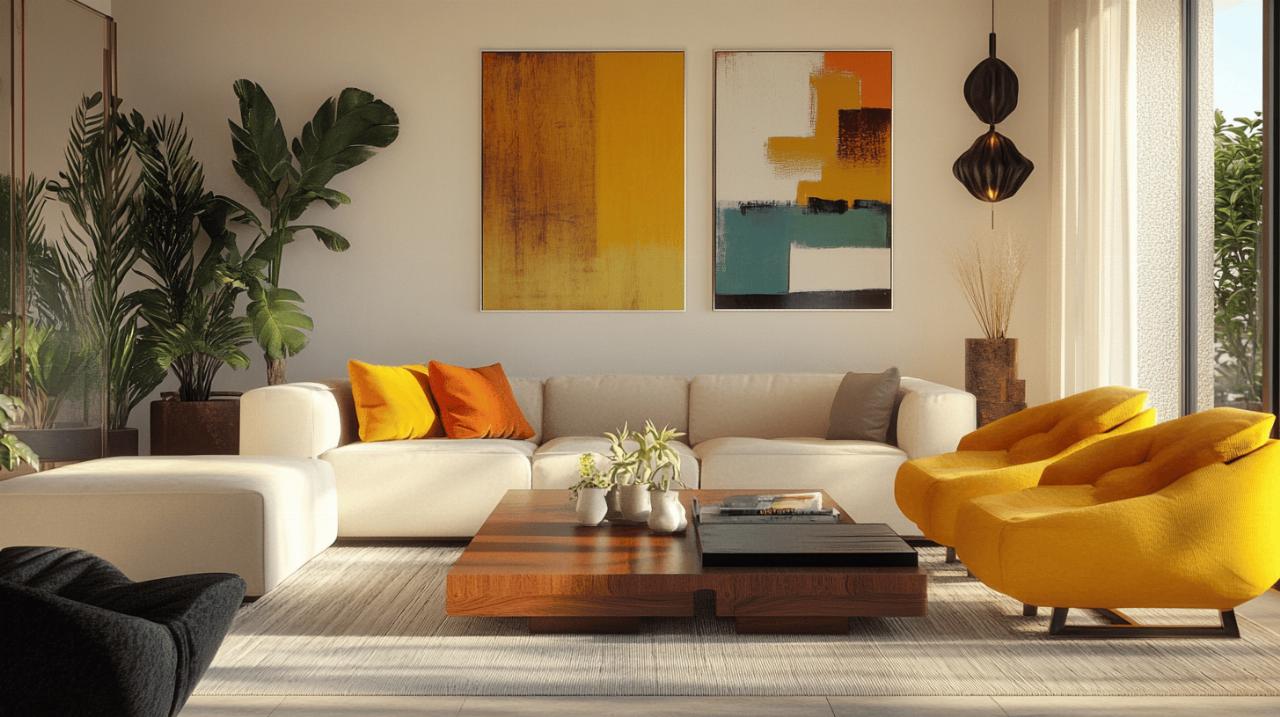Exploring the world of home décor opens up endless possibilities for creating spaces that reflect personality and style. Blending creativity with functionality has become the cornerstone of modern interior design, with innovative approaches continuously reshaping our living environments.
Repurposed materials in modern home design
The art of repurposing has emerged as a defining trend in contemporary home design. This sustainable approach not only reduces waste but also brings unique character to living spaces. From reclaimed wood to transformed metal pieces, these materials tell stories while serving practical purposes in today’s homes.
Vintage finds transformed into statement pieces
Old-world charm meets contemporary flair when vintage items find new life in modern homes. According to recent design trends featured by House Beautiful, interior designers are embracing items with history and transforming them into focal points. Weathered wooden doors become striking headboards, while antique suitcases stack beautifully as side tables. The Casa Idea movement particularly celebrates this blend of past and present, encouraging homeowners to see potential in forgotten treasures that might otherwise be discarded.
Industrial elements as decorative accents
Raw materials and industrial components have found their way from factories to fashionable homes. Exposed pipes, metal fixtures, and concrete surfaces create a bold aesthetic that complements both minimalist and eclectic spaces. The 2025 ELLE Decor A-List highlights designers who masterfully integrate factory-inspired elements with softer textures for balanced interiors. This approach aligns with the growing preference for mixing natural and manufactured materials, a technique that many prestigious design studios like Casa Idea have championed in luxury properties worldwide.
Biophilic design elements for living spaces
 Biophilic design has emerged as a powerful trend for 2025, bringing the calming influence of nature into our homes. This design philosophy connects indoor environments with natural elements, creating spaces that promote wellbeing and tranquility while adding distinctive character to any room. By incorporating living elements, natural textures, and organic materials, homeowners can transform their living spaces into rejuvenating sanctuaries that reflect the latest in home decor ideas and interior design trends.
Biophilic design has emerged as a powerful trend for 2025, bringing the calming influence of nature into our homes. This design philosophy connects indoor environments with natural elements, creating spaces that promote wellbeing and tranquility while adding distinctive character to any room. By incorporating living elements, natural textures, and organic materials, homeowners can transform their living spaces into rejuvenating sanctuaries that reflect the latest in home decor ideas and interior design trends.
Vertical gardens and living walls
Vertical gardens and living walls represent one of the most striking ways to incorporate biophilic design into your home. These living installations serve as both functional art pieces and natural air purifiers. Rather than limiting plants to traditional pots and planters, vertical gardens maximize wall space while adding texture, color, and life to any room. Start small with modular plant wall systems or pre-made living wall panels that simplify maintenance. For those with more ambitious design goals, custom-built structures can accommodate a variety of plant species with different light and water needs. The House Beautiful 2025 design forecast highlights how “letting the plants shine” creates focal points that transform ordinary spaces into extraordinary ones. Living walls work particularly well in areas that might otherwise feel stark or utilitarian, such as entryways, dining areas, or home offices, bringing the restorative power of nature indoors while making a bold design statement.
Natural Textures and Materials in Furniture Selection
Incorporating natural textures and materials in furniture selection forms the foundation of successful biophilic design. The mixing of natural and manmade materials has been identified as a key interior design trend for 2025, creating spaces that feel both grounded and sophisticated. Wood remains a perennial favorite, with raw-edge tables, hand-carved details, and light oak finishes gaining popularity. Stone elements like marble, travertine, and slate add earthy elegance to surfaces and accents. Rattan, jute, bamboo, and cork bring warmth and tactile interest while maintaining sustainability credentials. When selecting furniture, look for pieces that showcase these materials in their natural state, with visible grain patterns, imperfections, and organic forms celebrated rather than concealed. Layering different natural textures—such as a wooden coffee table atop a jute rug, or linen cushions against a leather sofa—creates depth and visual interest. This approach aligns with the design philosophy of mixing materials while maintaining a cohesive palette, allowing the inherent beauty of natural elements to define your living space.
